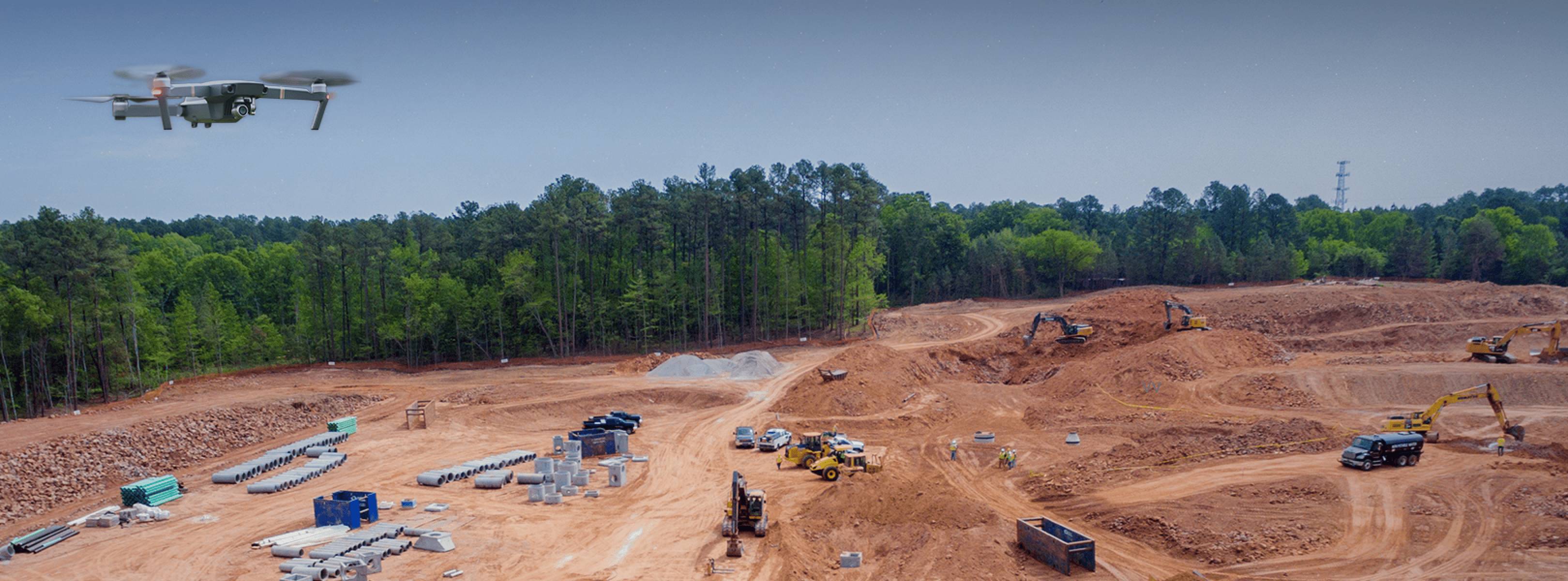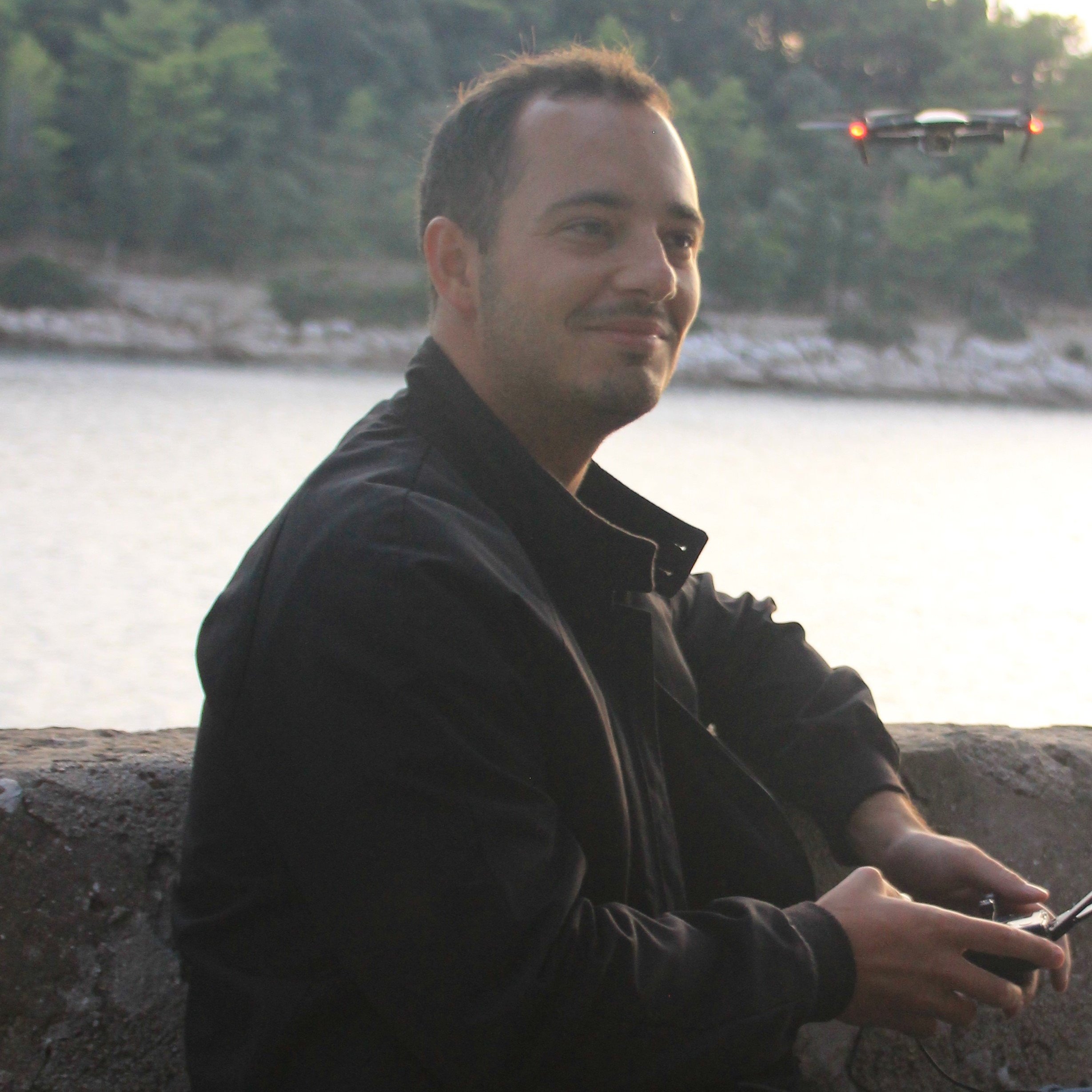A world away from the glamour and hype of package deliveries, FPV racing and personal transport drones, UAVs are being put to work across the country and supporting vital business operations.
One area feeling the benefit is in the sectors of Architecture, Engineering and Construction (AEC). Leveraging drones for construction site aerial photography is playing a role at all stages of major projects, from the creation of 3D models before works start, to the provision of regular progress updates from above, to infrastructure inspections once a job is completed.
Saving Time with Drones
Some elements of construction projects are both necessary and time-consuming. Before drones joined the workforce, measuring stockpile inventories was one such task.
Keeping a close eye on material stockpiles is vital for construction managers. Progress can come to a standstill if unexpected shortages arise, and delivery verification is vital if you want to make sure you receive exactly what you’ve paid for.
One of our partners, leading construction software supplier Stockpile Reports, found that using DroneBase pilots to gather stockpile data aerially led to a 98% decrease in time spent on site. You can read more about that in our case study, which is available to download here.
For Stockpile Reports, integrating DJI drones and DroneBase Pilots into the company’s workflow meant just 20 minutes on site rather than the 12 hours required during a traditional inventory process.
Those time savings are seen across the board once drones get involved in AEC projects. Infrastructure inspections and model generation can be achieved in a fraction of the time compared to traditional methods.
And it's not only the time of engineers being saved. Take the example of tunnel and bridge inspections. The support of a drone often removes the need for manned teams to use ropes or platforms that would require partial closures and disruption to the public.
Reducing Costs with Drones
The upside of saving time is, inevitably, reducing costs. AEC companies using drones to cut down on man hours can see huge decreases in the costs of their traditional data gathering efforts.
This is particularly the case if those previous efforts relied on manned aircraft. Working with DroneBase has reduced StockPile Reports’ aerial image acquisition costs by more than 400%. Stockpile Reports now does 4-5 times the amount of flights as before and are still saving money.
As our founder, Dan Burton said, “Before, only the largest aggregate producers could afford airplane surveys - but Stockpile Reports and DroneBase are democratizing this mission-critical data to every site using our network of tens of thousands of highly skilled drone pilots.”
Improving Safety & Precision with Drones
It’s not only stockpile calculations that can be done with the aid of drone data. Construction managers can also use aerial images to develop highly precise, geometrically accurate orthomosaic maps and 3D models. These are perfect for both project planning and progress reports.
These maps and models can be produced relatively quickly because a single drone can cover a large area without sacrificing accuracy. And, with the latest advancements that process is only going to speed up and become more precise.
Late last year DJI launched the Phantom 4 RTK, an upgraded version of the popular drone, specialized for mapping. With a built-in real-time kinematic (RTK) module, it can provide centimetre-level positioning data for improved image accuracy. Better yet, the system requires fewer ground control points - cutting down the often time and labor-consuming task required before mapping missions get underway.
In terms of safety, there are all sorts of ways that drones are reducing risk and protecting people on AEC projects.
For starters, regular inspections from above can alert managers to risks that might otherwise have gone unseen. With payloads advancing all the time, including thermal cameras, these inspections are growing more extensive and sophisticated. Construction site gas leaks are just one example of a hazard that can be detected from above.
It’s also important to factor in the safety of human inspection crews who, were it not for drone technology, would be put at risk in dangerous environments. Drones are steadily replacing the need for rope teams, harnesses and aerial platforms, which can only be a good thing.
If you’d like to learn more about the use of drones in architecture, engineering and construction, and get a quote for your project, visit our AEC page here.





.jpg?width=360&name=Banner%20Templates%20(7).jpg)